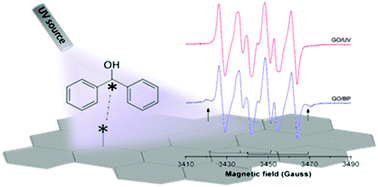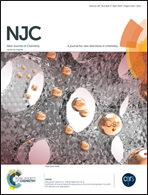Study of benzophenone grafting on reduced graphene oxide by unconventional techniques†
Abstract
Understanding the mechanisms acting behind the functionalization of graphene is of paramount importance for the application of functionalized graphene in polymeric nano-composite materials. This work reports the study of the influence of benzophenone in a UV-mediated grafting process on graphene oxide, carried out by unconventional spectroscopic techniques, such as electron spin resonance and thermogravimetric analysis coupled with in situ infra-red spectroscopy. Using these techniques, a direct investigation of the grafting process was achieved for the first time, while up to now only indirect evidence was provided, opening new perspectives for the study of small molecule grafting on graphene sheets. The presence of benzophenone grafted onto the reduced graphene oxide surface was demonstrated, and in particular an unstable radical species attributable to the semipinacol radical of benzophenone was revealed, which is a key step of the functionalization process. Moreover, X-ray photoelectron spectroscopy demonstrated that the grafting process effectively reduced graphene oxide recovering the properties of graphene, contemporarily leaving active sites for further polymer functionalization.


 Please wait while we load your content...
Please wait while we load your content...